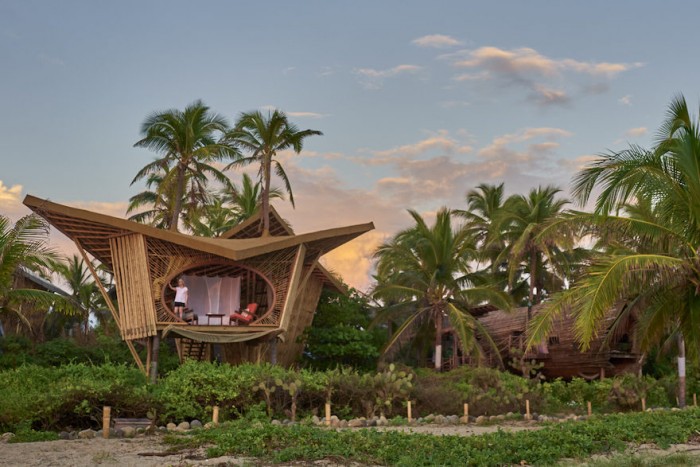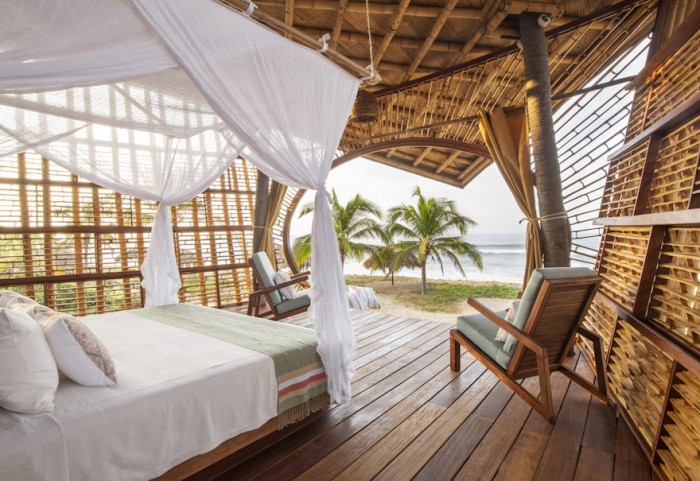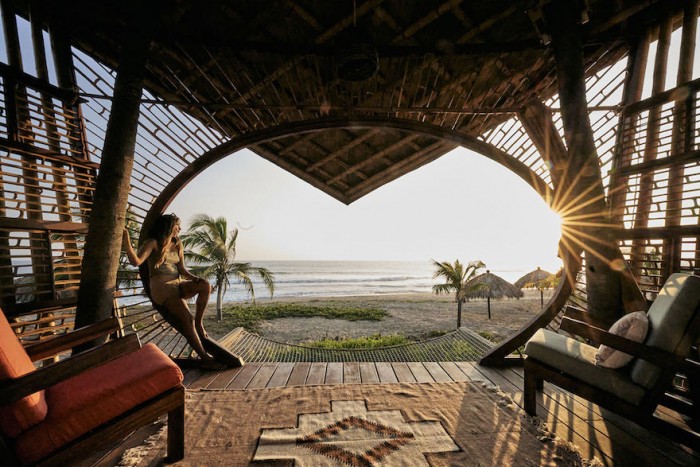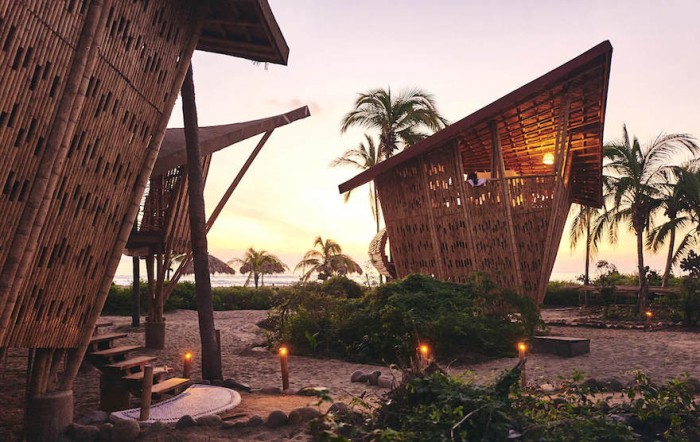Low-impact, nature-positive projects have absorbed Olav Bruin and Louis Thompson ever since they started their company Nomadic Resorts, and design studio Atelier Nomadic, around ten years ago.
“We had seen that tourism can have a very destructive impact on local communities and natural environments and felt the need to show that hospitality projects could be developed in a different way, by respecting local cultures and communities while minimising the impact on the environment – even enhancing it,” says Bruin.
“Some of our projects are built in damaged landscapes, where the natural biodiversity has disappeared due to previous human activities. We see it as our responsibility to minimise the physical impact of our designs on their surroundings. Whenever possible, we like to have a positive impact by increasing the number of native plants and supporting the recovery of biodiversity.”
The ethos of regenerative travel is behind the recently developed Bamboo Treehouse Village constructed at the Playa Viva resort in Mexico. Run entirely off-grid and generating all of its energy from solar power, the resort is already creating significant social impact. It works extensively with the local community to revitalise the surrounding land and supports health and education initiatives. Playa Viva is also a founding member of the Regenerative Travel organisation and founded the La Tortuga Viva turtle sanctuary.
At the heart of this project in paradise are six luxurious bamboo treehouses that appear to float above the landscape. Their design was inspired by the flattened, prismatic bodies of Mobula Rays, which migrate along the Mexican coastline – a sight captured by a guest who was flying a drone at the time.
The two-bedroom treehouses have been developed using bioclimatic design principles. The eaves of each roof keep out the heat of the sun and protect from heavy rains. “We used only locally available, sustainable materials such as bamboo and timber. The construction was done by local craftsmen, supervised by Jorg Stamm, an international bamboo expert,” explains Bruin.
Design kicked off in April 2021 and construction was completed on 1 November the same year. “The biggest challenge was this extremely short timeframe, as the treehouses needed to be completed before the start of the new tourist season, as the rooms were already booked,” says Bruin. “The owner, David Leventhal, a pioneer in regenerative travel, overcame this challenge by recruiting a small core team that could work efficiently within his vision and make decisions quickly.”
The Covid-19 pandemic has changed people’s perception of luxury, along with an increasing awareness of climate change.
“The human species is curious by nature, so you can’t really stop people from travelling,” Bruin explains, “but travellers are increasingly aware of the negative impact of tourism in general and want to visit places where their presence has a positive impact on, for example, the local community and wildlife. The new luxury is to thrive, to eat healthy local organic food, immerse yourself in the natural environment and learn from local cultures.”
Find out how the treehouses were constructed here
Read more:
A bamboo city built for communal living.
The large bamboo canopy sheltering Ghanaian artists.
Credits: Atelier Nomadic










